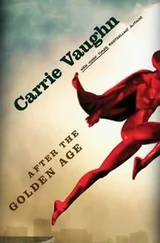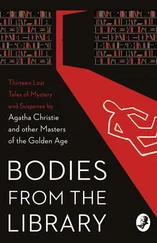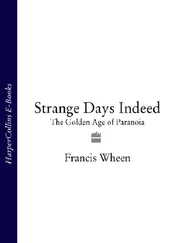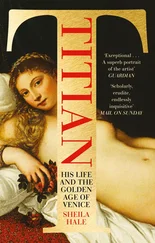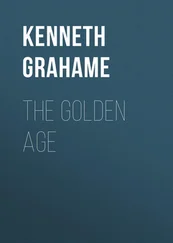Michal Ajvaz - The Golden Age
Здесь есть возможность читать онлайн «Michal Ajvaz - The Golden Age» весь текст электронной книги совершенно бесплатно (целиком полную версию без сокращений). В некоторых случаях можно слушать аудио, скачать через торрент в формате fb2 и присутствует краткое содержание. Год выпуска: 2010, Издательство: Dalkey Archive Press, Жанр: Современная проза, на английском языке. Описание произведения, (предисловие) а так же отзывы посетителей доступны на портале библиотеки ЛибКат.
- Название:The Golden Age
- Автор:
- Издательство:Dalkey Archive Press
- Жанр:
- Год:2010
- ISBN:нет данных
- Рейтинг книги:4 / 5. Голосов: 1
-
Избранное:Добавить в избранное
- Отзывы:
-
Ваша оценка:
- 80
- 1
- 2
- 3
- 4
- 5
The Golden Age: краткое содержание, описание и аннотация
Предлагаем к чтению аннотацию, описание, краткое содержание или предисловие (зависит от того, что написал сам автор книги «The Golden Age»). Если вы не нашли необходимую информацию о книге — напишите в комментариях, мы постараемся отыскать её.
is Michal Ajvaz’s greatest and most ambitious work.
The Golden Age
The Golden Age — читать онлайн бесплатно полную книгу (весь текст) целиком
Ниже представлен текст книги, разбитый по страницам. Система сохранения места последней прочитанной страницы, позволяет с удобством читать онлайн бесплатно книгу «The Golden Age», без необходимости каждый раз заново искать на чём Вы остановились. Поставьте закладку, и сможете в любой момент перейти на страницу, на которой закончили чтение.
Интервал:
Закладка:
Should one take a close look at the group of monkeys cavorting in the tree-tops, for example, one would see that one of them is not part of the game; instead he is sitting comfortably on a branch some way off, reading Aristotle’s Metaphysics and writing in the margin of one of its pages the word Absurd ! The observant student might notice, on the calm waters of the lake, the reflection of a house on whose veranda there is a rocking-chair in which a retired naval captain is sitting. Yet neither next to the lake nor elsewhere in the picture is there any such house. Taal fails to notice details such as this, but Hios finds them straight away and they are a source of great pleasure to her. Every morning she looks forward to finding something new in the shrubs of the garden or the gloom of a summerhouse.
Then she begins to notice other things, too. She suspects that the lines described by the spreading branches and the twisting lianas are a kind of trail left by a heavy, sad current that flows across the carpet from one form to the next. At one point the grey-blue surface of the lake resounds with a silent pain; at another, in a whirl of silver leaves stirred by the breeze, there is the sound of a music that borders on madness. And Hios asks herself who this stranger is. Who can this person be who repeats one hundred and twelve times — with the pertinacity of the melancholic at times of heaviest depression — a complicated oval motif in the ornamental relief work of the cornice of a summerhouse, before placing the goggle-eyed face of a bespectacled, pipe-smoking rabbit exactly where one expects the hundred-and-thirteenth to be? The princess has a dear friend called Ara, and it is around this time that Ara becomes painfully aware in the moments she and Ara spend together that Hios returns in her mind to the magic garden. No longer do Hios’s touches represent the crests of waves of desire that course through her body; her fingers continue to pursue old paths, but they do so abstractedly and mechanically, or — and this for Ara is more humiliating still — they follow courses suspiciously reminiscent of those taken by Gato’s carpet.
Gato soon comes to see in Hios’s joyous expression an understanding of the carpet that is very different from Taal’s. He begins to weave for her scenes with crazy animals and living objects. This early-morning dialogue between pictures and gazes, held day after day without the uttering of single word, is the only source of joy for Gato in the hostile palace where the task he is pursuing is practically hopeless and his being found out and killed is a constant threat. Hios, too, enjoys this wordless communication of conspiracy, which takes place before the unsuspecting Taal’s very eyes. And the images that Gato creates for Hios become more personal and tender with each passing day…
Dear reader, I shall not make myself ridiculous by leading you to a certain event which I would then present to you as a twist in the story. You have certainly guessed what is about to happen, just as I did when I was reading these passages of the Book . (In terms of psychology, the Book did not have much to boast about.) Naturally enough, Hios falls in love with Gato, and so she will play in the story the somewhat trite role of an Ariadne (in a proper, non-symbolic, albeit miniature labyrinth, what’s more). After several pages on which the unknown author describes how the motifs of Gato’s carpet become ever more erotic messages to Hios, the much-anticipated moment arrives and the princess and Gato embrace. After this Hios goes every night to Gato’s chamber, where she stays until morning. Several times she has to avoid being seen by Taal (who is coming to see what is new in the garden-carpet) by concealing herself behind a potted palm in an alcove of the corridor. Unhappy and insulted, Ara leaves Devel and disappears for a long time from the pages of the Book . Indeed, in my reading of the Book I came to believe she would never reappear; then she turned up unexpectedly after many more folds in the concertina so as to play a telling role in the Devel tale’s bloody finale.
The night Gato finishes work on the carpet, Hios is in his chamber. The day has been humid, but after midnight the atmosphere cools and from the palace gardens there comes the gentle murmur of rain falling on leaves. The princess throws a blanket around her shoulders and goes to sit on the windowsill. Gato sits down next to her, and together they look down at the town, up at the starless sky and across to a place where land and sea are joined. In the dense, dark mass of the town all that is visible is ragged strips of streets illuminated by street lamps and the distant fire of the lighthouse in the harbour. Gato turns to Hios and tells her who he is and why he has come to the palace. All Hios asks of him is that he should take her with him when he leaves Devel; then she tells him that the red gemstone is on the highest shelf of the treasury, in a small box which is made of the wood of the terebinth tree and has a picture of a basilisk on its lid. She tells him what to do in order to get it.
“Do not try to seize the stone unnoticed,” she says. “You may believe the corridor to be empty before the door to the treasury, but in fact there are many peepholes manned by many unseen eyes. Observe the handles of the closed doors of the corridor and you will see that none of them is still: they are held from the inside by the hands of watchers. Listen well at the thin walls and the folds of the curtains and you will hear the whisper of secret commands passed from mouth to mouth. The palace corridors are long, and you would not be the first to disappear in them without a trace. Death awaits in the gloom of nooks and empty corridors; you must do your dealings in the glare of the chandeliers of the great halls. Tomorrow my father will hold a celebration in the main hall. You will announce to him before all those present that you wish to solve the problem set by the door to the treasury. Thus shall everyone know of it. It is highly likely that the eyes of curious courtiers will follow you about. That you shall be under surveillance is good: those curious eyes might spare you from the knife or the bullet.
“In moving the game stone about the labyrinth, naturally it is impossible that one should be guided by written instructions. You will need to know each of the thirty-six moves by heart. Thirty-six times you must decide whether to move the stone to the right or to the left. I shall now teach you the story of the caliph of Baghdad. This you shall have no difficulty in remembering, as each of its events is linked to the next. Disguised as a merchant, the caliph walks the streets of Baghdad, where he has thirty-six encounters that correspond to the thirty-six moves. As you move the stone you will tell the story to yourself. Whenever the caliph meets a man, you move to the right; when he meets a woman, this means you must move to the left.”
And there at the window above the sleeping town the princess proceeds to tell the story of the caliph, who one warm night mounts the side gate of his palace and sets about walking the narrow moon-and-starlit streets. There he has encounters with a wise man, a robber, a magician, a ferryman who works the Euphrates, a fig-seller, a woman whose face is concealed by a veil. The woman then disappears and reappears in a great variety of guises. The caliph last comes across her in his chamber after he has returned to the palace. The mysterious woman is the daughter of his vizier. The caliph embraces her, delighted to have captured the apparition that escaped him time and again in the Baghdad night. The last move of the stone is to the left, after which it meanders about the passages for a while before it suddenly reaches the centre of the labyrinth, whereupon a hidden mechanism opens the door. Hios teaches Gato the story of the caliph all night long. Only when the dawn-time scents of the carpet reach their nostrils does she steal from Gato’s room.
Читать дальшеИнтервал:
Закладка:
Похожие книги на «The Golden Age»
Представляем Вашему вниманию похожие книги на «The Golden Age» списком для выбора. Мы отобрали схожую по названию и смыслу литературу в надежде предоставить читателям больше вариантов отыскать новые, интересные, ещё непрочитанные произведения.
Обсуждение, отзывы о книге «The Golden Age» и просто собственные мнения читателей. Оставьте ваши комментарии, напишите, что Вы думаете о произведении, его смысле или главных героях. Укажите что конкретно понравилось, а что нет, и почему Вы так считаете.




